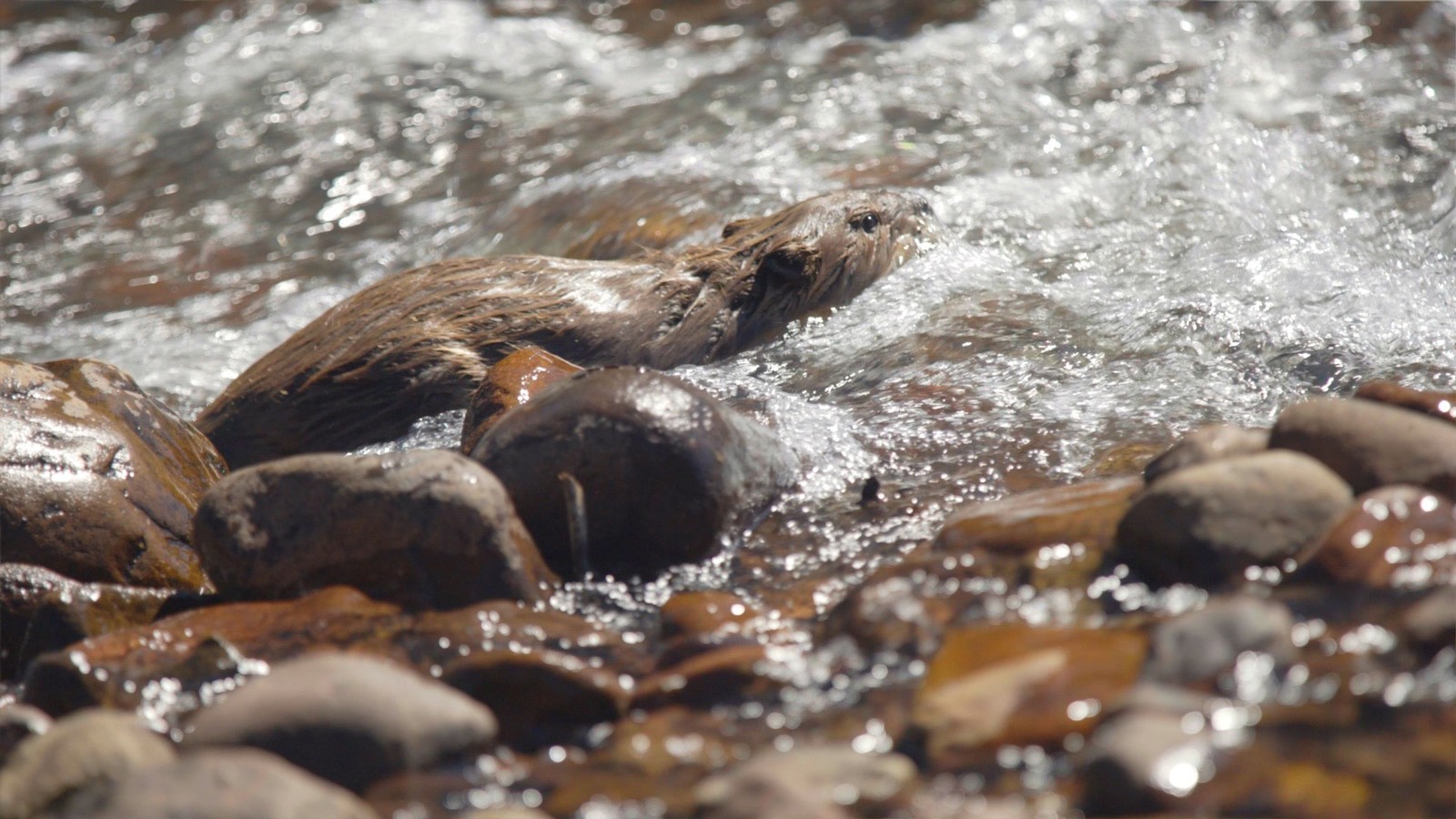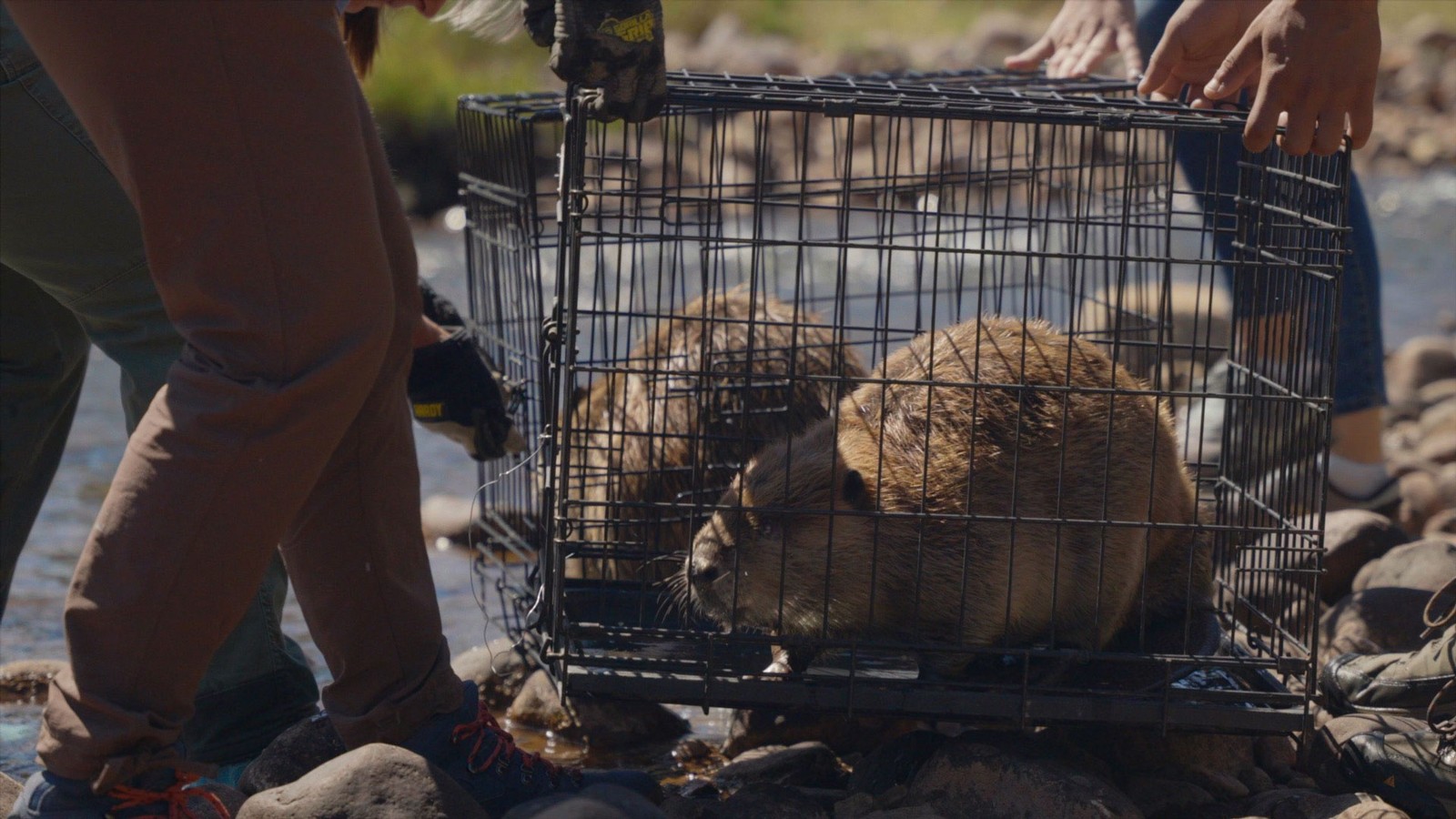USU Center Relocates Beaver as Land Managers See Benefits of Rodents' Residence
By Lael Gilbert |
Video by Taylor Emerson, Digital Journalist, University Marketing & Communications
Ask any landowner their opinion of beaver working in streams and rivers on a property, and you’ll likely get a mixed reaction. Beaver are, after all, powerhouse workers that could potentially have major — and sometimes problematic — impacts on a landscape. But the messy work that beaver do can also have major benefits, according to Nate Norman of the Beaver Ecology and Relocation Center at Utah State University.
A growing number of land managers and ranchers are noting the perks of having a beaver-in-residence, and are inviting the animals to find a home on their property — with the help of the team at the Relocation Center. The group traps nuisance beavers, evaluates them at the facility’s “beaver bunkhouse” and releases them again into the wild, by invitation only.
First-year Wildlife Ecology and Management student Hailey Simko attended a release in the high Uintas of a recently-trapped beaver family — two adults and two kits. She accompanied the team from the beaver bunkhouse on a 3½ hour drive into the backcountry, with the animals carefully bermed by ice and their cages covered in wet towels to keep them cool and to minimize stress.
“It was awesome to see what this kind of interaction with animals was like in the field,” Simko said. “They were treated with a lot of care and attention and released in what seems an ideal location.”
They seemed so calm and at home it was actually a bit anticlimactic to see them swim away after the release, she said.
The center offers landowners grappling with problem animals an alternative to lethal trapping. At their new home, beavers have the chance to create wetland habitat, increase biodiversity, improve water quality and even store water to minimize the impacts of droughts, floods and wildfire.
“It’s a win-win-win,” said Becky Yeager, volunteer coordinator at the Relocation Center. “We are saving the beavers, keeping their family intact as much as possible, and putting them in an area where they can restore habitat.”
A Beaver swims upstream after being released into the West Fork of the Blacks Fork River in Northern Utah. This Beaver was one of four that were released on Sept. 3 by USU's Beaver Ecology and Relocation Center. (Photo Credit: USU/Taylor Emerson)
Volunteers from USU's Beaver Ecology and Relocation Center help transport two cages of Beavers to the bank of the West Fork of the Blacks Fork River in Northern Utah. The Beavers were relocated from the Bear River Migratory Bird Refuge after they were trapped there by the Utah Division of Wildlife Resources. (Photo Credit: USU/Taylor Emerson)
WRITER
Lael Gilbert
Public Relations Specialist
Quinney College of Natural Resources
435-797-8455
lael.gilbert@usu.edu
TOPICS
Environment 263stories Water 257stories Hands-on Learning 205stories Wildlife 141stories Ecosystems 129stories Rivers 101stories Animals 89storiesComments and questions regarding this article may be directed to the contact person listed on this page.









